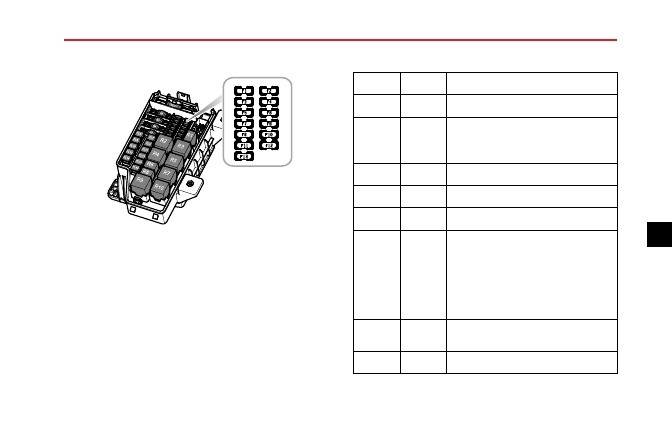New MG3. Service Manual - part 14

EMERGENCY INFORMATION
Engine Compartment Fuse Box
F
L 6
F L 8
F L 1 0
F L 1 2
F L 1 4
F L 7
F L 1
F L 2
F L 3
F L 4
F L 5
R 2
R 4
R 6
R 8
R 9
R 1 0
R 7
R 5
R 1
F L 9
F L 1 1
F L 1 3
F L 1 5
F L 1 6
R
3
Check or Replace a Fuse
1 Switch off the ignition switch and all electrical
equipment, disconnect the battery negative cable.
2 Press the catch to open the fuse box cover.
3 Check if any fuse is blown.
4 If the fuse is blown, replace it with another fuse of the
same ampere value.
Fuse Specification
Code
Specs
Function
F1
10A
Right front dipped beam
F2
5A
Downstream oxygen sensor, Intake
camshaft solenoid valve, Exhaust
camshaft solenoid valve
F3
10A
Left front dipped beam
F4
10A
A/C compressor clutch relay
F5
5A
Engine control module
F6
5A
A/C compressor clutch relay,
Canister control valve, A/C medium
pressure switch, Cooling fan relay
box, Fuel pump relay, Starter relay,
Clutch position switch, Start stop
switch
F7
30A
Front wiper enable relay, front
wiper speed relay
F8
5A
Upstream oxygen sensor
209
5